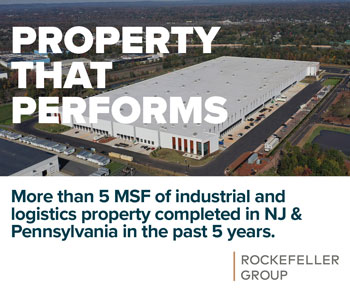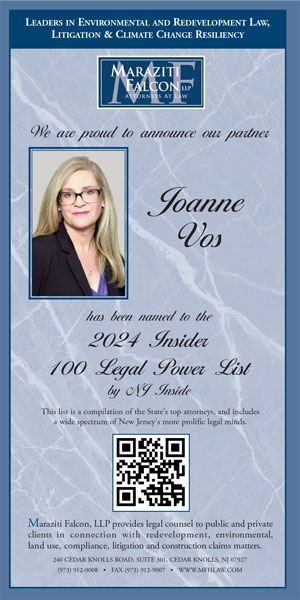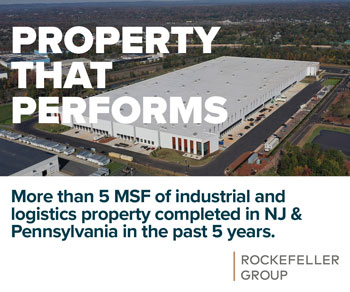By Peter S. Reinhart
We all get older until we don’t. During our lifetime, our bodies age and we do our best to slow down the process of aging, but inevitably the end arrives.

The use of our land is different. Yes, the earth is aging and changes occur in its appearance. But unlike the human body, humans do have the ability and the opportunity to reinvent and change the physical built environment and, in effect, start a new life for the structures and environment that collectively make up a state or county or municipality.
In New Jersey, time has seen the state evolve from a primarily agrarian one to a primarily urban/suburban state. From the end of World War II to the early part of the 21st century, New Jersey grew into a state dominated by its prosperous suburbs and fading urban areas. But something is changing in the past 20 years or so. The urban areas are gaining new life while many of the previously thriving suburbs are wilting.
The causes of this change in trend are many — demographics being a major factor. But are the suburbs destined to continue to fade, unable to adapt to the new market and demographic forces? Or is there hope that they will again adapt and become economic engines again?
The answer is up to them.
We are witnessing a fantastic effort from municipalities fortunate enough to have a train station. Most of them are making the right land use decisions to attract the kind of reuse and redevelopment that is attractive to the large number of younger people born in the 1970s and later. Those important decisions made by the leaders of those transit towns include changing their zoning and land use laws to allow the developers who saw the market changes long before the town leaders did to develop, or more correctly redevelop, those fading towns.
But in a good number of those nonurban areas not fortunate enough to have a train station, we are not seeing the same willingness to adapt. Those towns who enjoyed the fiscal happiness from large office campuses, shopping malls and other classic uses created in the second half of the 20th century are slow to react and to adapt to the market and demographic forces.
The number of home buyers looking for the very big home on a very big lot are far fewer than in the past. Yet, much of the zoning in those suburban towns that encouraged that housing has not changed. Many of those towns have been resistant to zone for uses with higher density or (floor area ratio) for fear of incurring a higher affordable housing requirement. Some towns are also fearful that more school children and therefore higher property taxes will follow. Others are still locked into the belief that large single-family houses on large lots are the best way to preserve property values. Others just don’t like change. Period.
I would suggest that several actions are needed for those nontransit suburban towns.
First, change the zoning to allow adaptive reuse of outdated office parks, shopping centers and the like to attract businesses and younger residents.
Second, examine areas within the town that could be modified to create a “town center”-type area with combinations of housing, retail and entertainment that will attract millennials and other younger-generation people.
Third, look for areas where concentrations of people, whether residents or workers, could be sufficient to attract alternatives to single-person automobile use.
Fourth, find ways to create more affordable housing both to meet the legal minimum requirement for the municipality and beyond, to attract the workers that will improve the fiscal health of the town. Converting existing structures into residential with all or some affordable housing is one way. Affordable housing does not have to be only in the 80/20 inclusionary sprawl development.
Fifth, encourage younger people to become members of the planning and zoning boards and the governing body. The baby boomers should not be making all the long-range decisions for the ensuing generations.
Sixth, undertake a “SWOT”-type analysis (strengths, weaknesses, opportunities and threats) similar to what business organizations do. This is beyond the periodic review of its master plan required by the Municipal Land Use Law. The municipality should take a realistic analysis of its strengths, weaknesses, opportunities and threats. “How does our town compare as a place to attract the necessary development and redevelopment to compete with other municipalities, both within and without New Jersey?” Then come up with a plan to deal with it.
Seventh, a good number of the active adult 55 and older communities were built more than 30 years ago. Their architecture is dated and not as attractive to the growing number of baby boomers looking to downsize and relocate into age-restricted communities. The property values of those aged communities are declining in some cases and the fiscal viability of those homeowner associations is in danger. Towns should consider removing the age restrictions to allow these older homes to become the new starter homes for the younger generations. Yes, this will be controversial, but worth considering.
Finally, at the state level, a comprehensive review of the MLUL should be undertaken. The MLUL was originally adopted in 1976, more than 40 years ago.
Peter S. Reinhart, Esq., is the director of the Kislak Real Estate Institute and the NJAR/Greenbaum/Ferguson Professor of Real Estate Policy at Monmouth University. He is the Chair of New Jersey Future.










